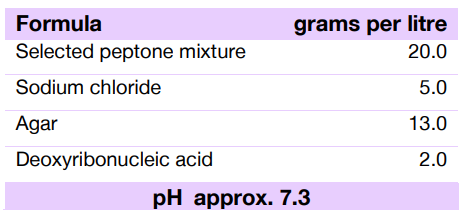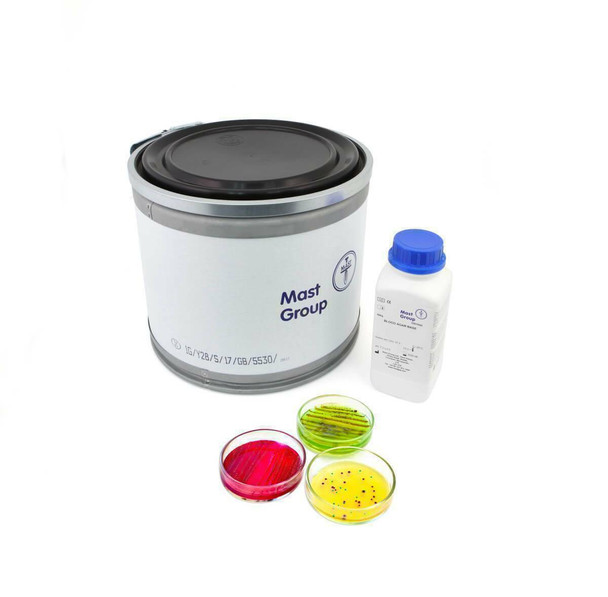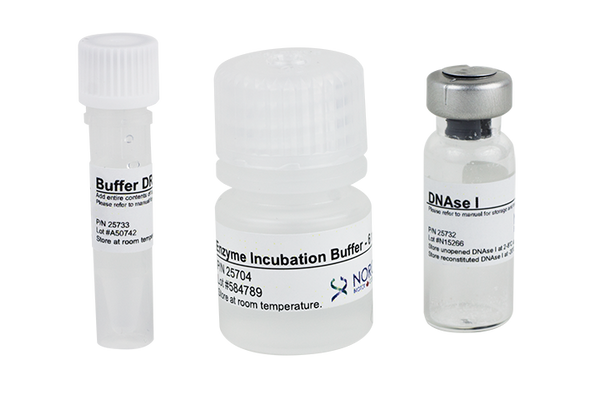Description
DNase Agar | DM132D
A medium for the presumptive identification of pathogenic staphylococci by demonstration of DNase production.
In 1957 Weckman and Catlin1 showed that strains of Staphylococcus aureus produced significantly larger quantities of the enzyme DNase in a tube viscometric test, than did
S.epidermidis. This suggested that DNase production might be a useful supplementary determinitive characteristic to the coagulation test, for the identification of potentially pathogenic staphylococci. Later Jefferies et al. (1957)¨ described a rapid agar plate method for demonstrating DNase activity and 100% correlation between this test and the tube coagulase method was noted by Di Salvo (1958).3 Subsequent work by other workers 4-6 has shown that a certain proportion of staphylococci do not fit into this scheme. However, Blair et al. (1967)7 recommended the DNase plate test as a useful method for screening out coagulase negative staphy-lococci.
2. Typical Formula*

3. Directions
1. Suspend by swirling 40g of powder in 1 litre or the contents of the sachet in the stated volume of distilled or deionised water.
2. Mix well and sterilise by autoclaving at 121°C for 15 minutes.
3. Cool to 50°C, mix well and pour plates.
4. In Use
Inoculate plates with drops of cultures of the organisms to give heavy spots of growth after 18 hours incubation at 37°C. Flood the plates with normal HCl and examine for clearing around colonies (DNase positive). This clearing is due to the fact that nucleotide fractions, after DNase attack, are not precipitated by acid. DNase negative colonies, therefore, show no clearing.






